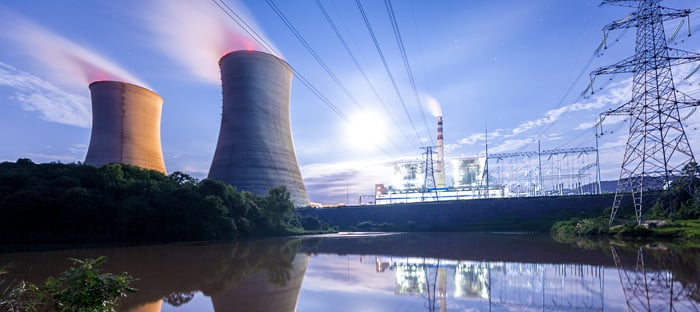Power your home
Enjoy price security with Safe Harbor fixed price energy plans

Power your business

Loading component...
Loading component...
Energy Resources

Fall back. Spring forward. It’s the easiest way to remember which way to set the clock when Daylight Saving Time (DST) rolls around – and whether to grumble about short days or lost sleep.
Though the time change often feels like a pain in the clockworks, not only does it give us all more daylight to enjoy, it also reduces our collective energy consumption.
How much it reduces our energy consumption is another question altogether.
You may have heard that Benjamin Franklin first introduced the concept of DST in the late 1700s. He didn’t, though Franklin did tell Parisians that changing their sleep routine would help reduce candle consumption.
Or someone may have taught you DST was created to give the U.S.’s growing agricultural industry more sunlight for field work. Truth is, the agriculture industry actively lobbied against DST in 1919. Turns out, DST disrupts a farm’s natural flow. If cows are milked at 6 a.m., a shift in time makes it more difficult for farm staff and animals. Either the staff work an hour earlier or the retrain the cows on the new milking time.
DST was actually introduced as an energy savings measure in Germany and the U.S. during World War I. After the war, the U.S. repealed the measure.
It returned in World War II in the U.S. and has hung around ever since. There was no conformity regarding DST during the years that followed. States could – and did – switch between DST and standard time whenever they wanted, for whatever reason they wanted to.
In 1966, the U.S. passed the Uniform Time Act, which standardized DST’s start and end dates. The twice annual turning of the clock has caused debate ever since.
The U.S. Senate unanimously passed the Sunshine Protection Act in March 2022, which would make DST permanent. Even that has caused a stir. Kenneth Wright, director of Colorado University’s Sleep and Chronobiology lab, says the time change should go – but we should choose standard time over DST to avoid sleepy drivers in the morning and our bodies wanting to stay up later at night.
Enter your zip code to see energy plans in your area.
To be clear, the U.S. observes DST – the practice of setting the clock forward by one hour to extend daylight in the evening – from March until November. That extra hour reduces overall energy consumption by reducing peak energy consumption hours. In other words, if the sun is out, no need to turn on the lights.
How much energy do we save? Nearly 1.3 TeraWatt-hours per year in the U.S., according to a 2008 Department of Energy report. That’s more than 1 billion kilowatt-hours (kWh). Given that the average incandescent lightbulb burns almost 50 kWh per year – that’s a lot of energy saved.
All the more reason to stop changing our clocks and make DST permanent, right? Well, there’s some debate as to whether DST actually affords us that much savings.
Since the Department of Energy’s 2008 report, several newer studies suggest that energy savings from DST are offset by energy consumption from other areas, including increased use of air conditioning.
The biggest factor in that shift may be lighting technology. Because LED bulbs consume far less energy than incandescent bulbs and are more widely used now than in 2008, energy savings from artificial lighting may be irrelevant with respect to DST.
One well-known study, conducted in Indiana during the same year as the DOE report, found that the time change increased residential electricity demand, to the tune of $9 million a year, and increased greenhouse gas emissions.
Then again, a California Energy Commission study found that DST reduced electricity consumption by up to 3.5% during summer months.
The discrepancy is likely due to several additional factors that come in to play when measuring overall energy savings: geography, climate, and energy consumption patterns, to name just a few.
Rather than rely on DST to help you save, take advantage of the time change by using it as a reminder to conduct a a DIY home energy audit. Conducting a basic energy efficiency audit of your home’s enclosure and HVAC system can give you a better sense of your home’s strengths and weaknesses, which can help save you money.
The bulk of DST takes place during the summer months, and the summer months provide a great opportunity to reduce your electric bill, too. From monitoring your light usage to investing in a programmable thermostat, there are several ways to save.
DST is also recognized for its contributions to reducing the impact of greenhouse gas emissions on our climate. Many energy companies rely on fossil fuels to generate electricity, making the electricity sector one of the largest sources of GHG emissions in the U.S. Reduced energy use can help lower GHG emissions, as well.
Or go a step further by choosing a fixed-rate, clean energy plan. Because generating electricity via nuclear power is a carbon-free, zero-emission product, it is defined as a clean energy resource. Nuclear energy produces more electricity on less land than any other clean-air source and produces a fraction of the waste other energy resources do, to top it all off.
Ready to learn more?
Enter your zipcode to find 100% Green plans in your area.